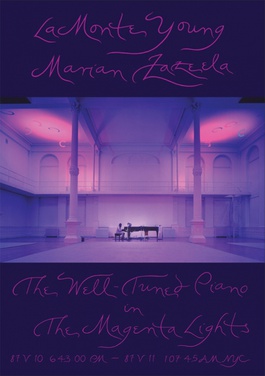
The Well-Tuned Piano
The Well-Tuned Piano is an ongoing, improvisatory, solo piano work by composer La Monte Young. Begun in 1964, Young has never considered the composition or performance "finished", and he has performed incarnations of it several times since its debut in 1974.[1] The composition utilizes a piano tuned in just intonation.[2]
For the tuning, see Well temperament.A typical performance lasts five to six hours.[3] Young's wife, the artist Marian Zazeela, has contributed the lighting work The Magenta Lights to these performances.[4] A 1987 performance of the piece was released on DVD in 2000. The Guardian described it as "one of the great achievements of 20th-century music."[1]
Inspiration and influence[edit]
Young gives credit to Dennis Johnson, a former schoolmate and composer from UCLA, for inspiring The Well-Tuned Piano. Johnson wrote an extensive, improvisatory, solo piano piece titled November in 1959, a few years before Young began working on The Well-Tuned Piano. Although the piece is said to be as long as six hours, the tape recording made in 1962 cuts off suddenly after only an hour and a half.[5]
Young has also been influential to many composers and musicians throughout his life. Dennis Johnson cites Young as an influence in his composition, The Second Machine, which is based on four single pitches of Young's Four Dreams of China.[6] Composer and critic Kyle Gann[7] has said that The Well-Tuned Piano, "may well be the most important American piano work since Charles Ives's Concord Sonata, in size, in influence, and in revolutionary innovation".[2] Gann has also called the piece "the most important piano work of the late 20th century."[8] In his book, Four Musical Minimalists, Keith Potter states that The Well-Tuned Piano is significant, "in the contexts of musical minimalism, of musics working at the interface between composition and improvisation, and of twentieth-century music for solo piano".[9]
Sources